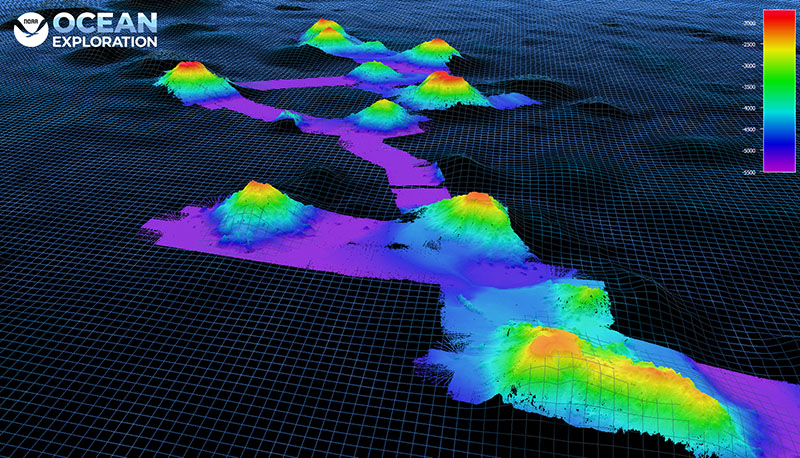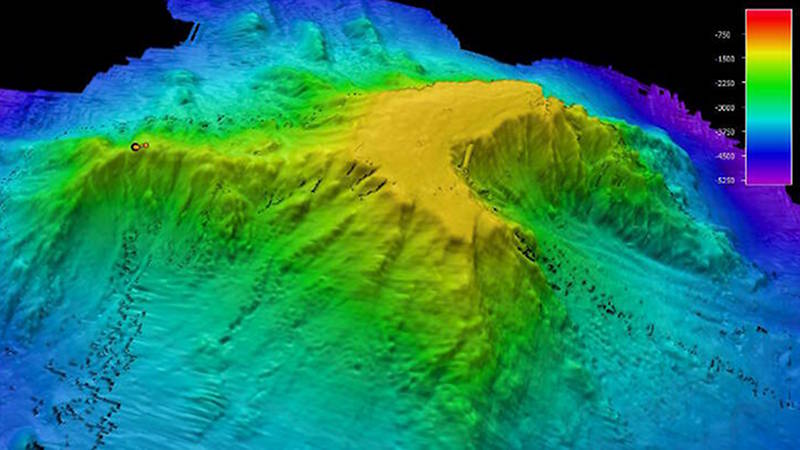What is a mapping watchstander and what do they do?
Mapping watchstanders act as sentries and data keepers while collecting, processing, and documenting high-quality ocean and seafloor data captured by sonar and oceanographic instruments.

Mapping watchstander Cameron Kuhle, an Explorer-in-Training on the Seascape Alaska 1: Aleutians Deepwater Mapping expedition, "cleans" multibeam sonar data to ensure consistency and accuracy. Image courtesy of NOAA Ocean Exploration. Download image (jpg, 4.18 MB).
Behind every bathymetric map generated during NOAA Ocean Exploration mapping expeditions is a suite of mapping watchstanders. Acting as sentries and data keepers, mapping watchstanders collect, process, create products for things like the NOAA Ship Okeanos Explorer live operations map , and document the high-quality data captured by sonar and oceanographic instruments installed on a vessel.
During mapping expeditions on Okeanos Explorer, you can find mapping watchstanders posted in the mission control room at each hour of the day and night. They sit behind an array of at least eight active computer screens that display data as it is acquired in real time by several instruments on the ship. On Okeanos Explorer, these precisely positioned instruments include a deepwater multibeam echosounder, split-beam sonar transducers, a sub-bottom profiler, and other important gadgets that all serve the same purpose: collect high-quality data with which we can map the ocean bottom, water column, and sub-bottom. Mapping watchstanders monitor as data arrives in several forms, actively process data to remove extraneous points, and generate daily map products that document the data captured throughout an expedition.
Another important aspect of a mapping watchstander’s responsibilities is troubleshooting. In order to map the deep ocean, several instruments need to function simultaneously to collect seamless, accurate data from the seafloor. At any moment, problems may surface with these instruments that need resolving in order to preserve the continuity and integrity of the data; the mapping watchstanders closely monitor each component of a finely tuned system and address errors or complications as they arise.
Mapping is an integral foundation piece of deep-sea research and remotely operated vehicle (ROV) dive planning. It allows the planners to understand the depth and slope of an area – as well as significant features like shipwrecks, gas seeps, or volcano plumes – in order to scientifically and logistically assess and determine both the area of highest biological diversity and the safest path for an ROV dive transect. Mapping watchstanders are invaluable in the pipeline of mapping to ROV dive planning through their careful gathering and processing of mapping data.
By Logan Kline, 2023 John A. Knauss Marine Policy and Science Communication Fellow, NOAA Ocean Exploration
Edited for accuracy by Amanda Bittinger, Hydrographer, Sunset Hydrographic
Published May 16, 2023
Last updated August 21, 2024
Relevant Expedition: Seascape Alaska 1: Aleutians Deepwater Mapping


